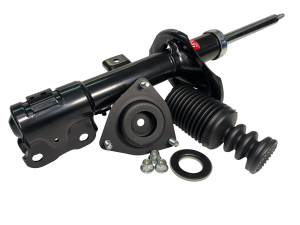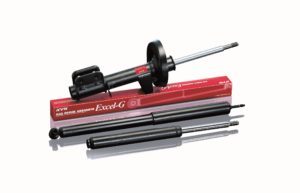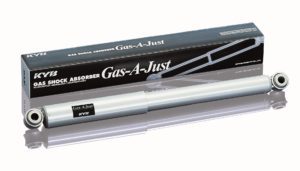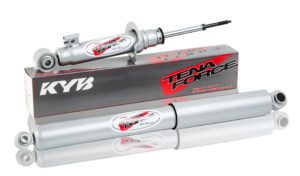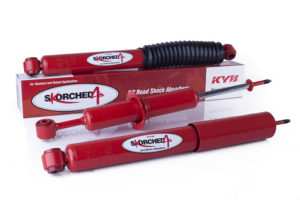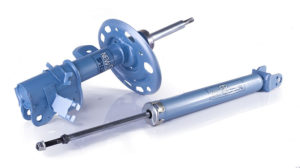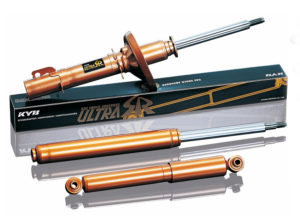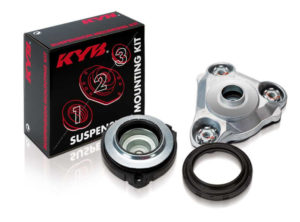The function of a shock absorber is to control a vehicle’s movement when the tyres come into contact with a bump in the road.
The shock absorber offers resistance to the suspension system to slow vehicle movement to a controllable state. Without the dampening effects of a shock absorber, the vehicle would not react by reducing speed and may as a result bounce or roll off the road. Listed below are five key functions of a shock absorber:
- Control the movement of the vehicle
- Provide a smooth and comfortable ride
- Optimise braking performance
- Enhance steering responsiveness
- Ensure optimum contact between tyres and the road
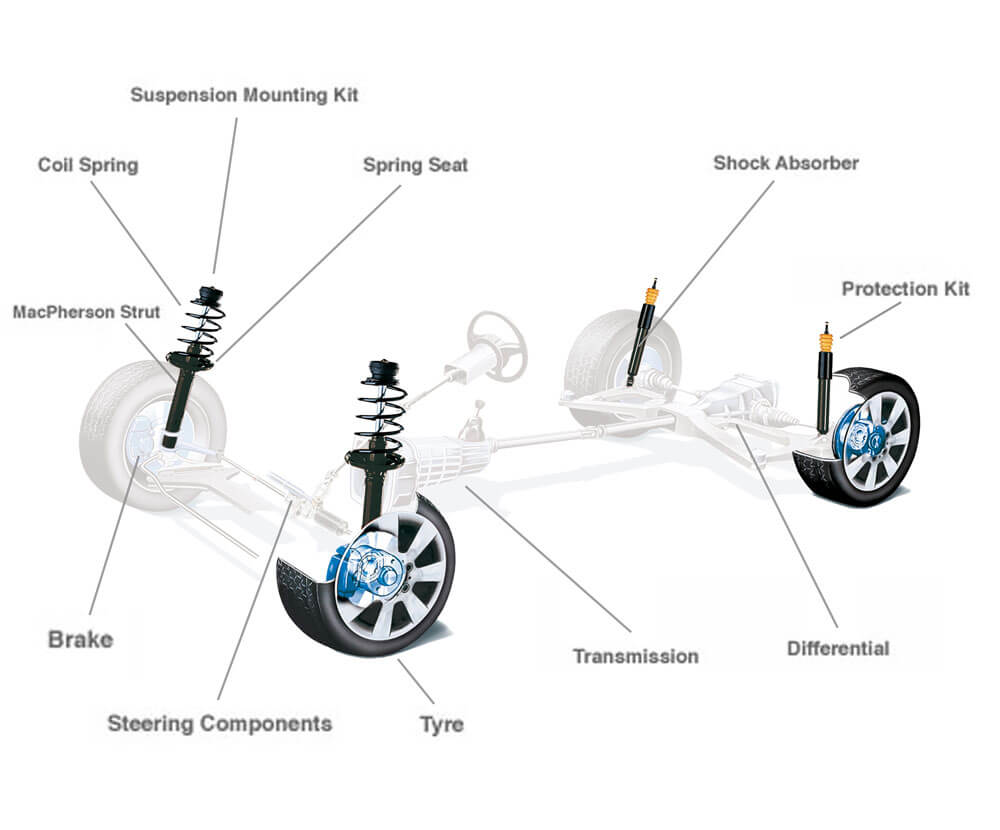


When driving, road surface irregularities cause shocks absorbers and struts to compress and extend, forcing fluid through a series of speed sensitive valves, (the piston rod speed determines the appropriate valve) to restrict oil flow and control vehicular movement.
This friction causes heat to be generated in the oil as it passes through the valves. This heat is then dissipated through the outer body of the shock absorber and cooled by air passing over it. Meanwhile, nitrogen gas adds pressure to the hydraulic oil to make the shock absorber more reactive to movement, to delay the onset of fading and foaming and to make it a high performing product.
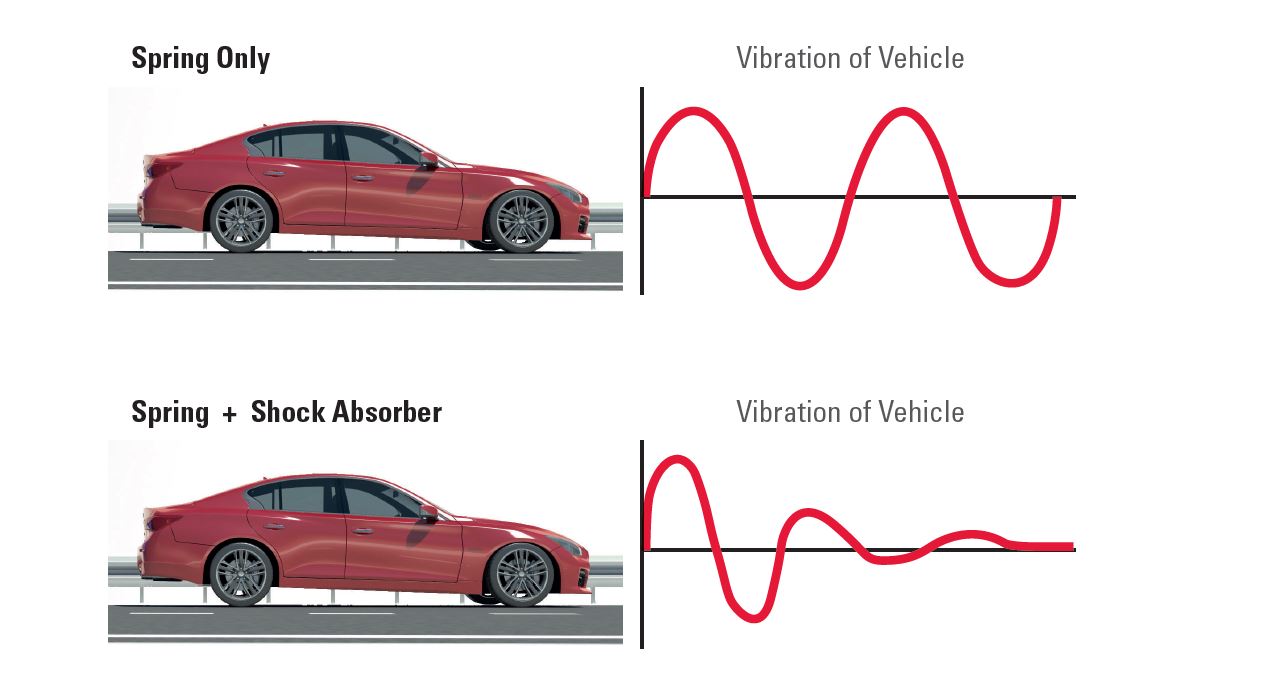


KYB manufactures both Twin-Tube and Mono-Tube shock absorbers for the Australian market.
The Twin-Tube construction design is the most common and popular shock absorber for aftermarket vehicles, due to the exceptional performance and affordable price for the average vehicle.
Twin-Tube Shock Absorbers contain two cylinders. The inner cylinder is where the piston rod and valve body move up and down. The outer cylinder serves as a reservoir for the hydraulic fluid. There are fluid ports in the piston and in the stationary base valve. The moving piston controls most of the damping force, while the base valve regulates fluid flow between both cylinders and provides additional damping control.
Mono-Tube Shock Absorbers have a single cylinder that has a single piston valve body, and has two distinct chambers. The high pressure gas chamber is separated from the fluid chamber by a floating piston and seal, which provides an expansion area for the excess fluid movement during the compression stroke. On more aggressive movement the floating piston is pushed further into the gas chamber which increases gas pressure and provides additional damping force. Due to its higher performance capabilities, the mono-tube design is used as original equipment on some vehicles and offered as an upgrade on vehicles that came equipped with the twin-tube design.
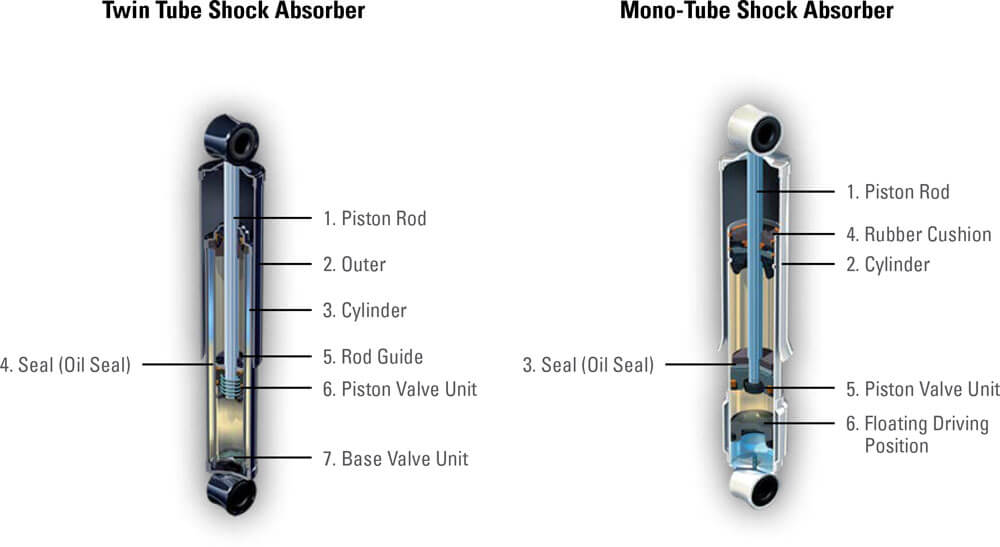


While both types of shock absorbers control vehicle movement, the self-levelling shock absorber is designed to perform an additional function.
Self-levelling suspension, which is commonly found in SUV models, enables the rear of a car to sag when weight is applied as a result of softer coil springs. When driving, the movement of the vehicle causes small compressions within the shock absorbers to raise the vehicle back to its factory pre-determined ride height. Self-levelling shock absorbers are suited to vehicles that carry heavy loads or are required for towing.
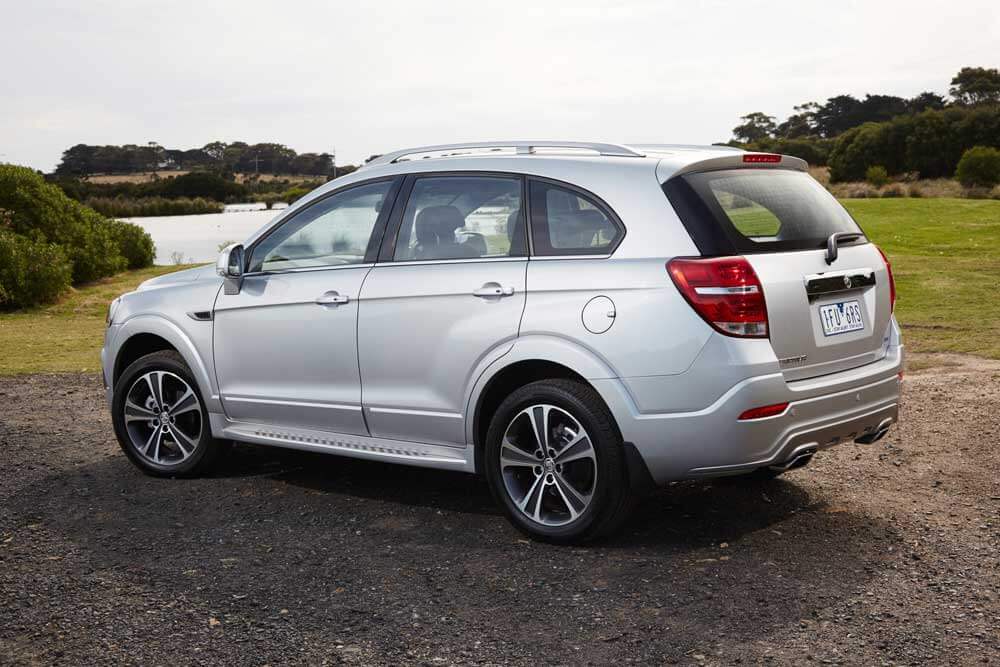


SIMPLY PUT: MORE WEAR = LESS VEHICLE CONTROL
There are two detrimental influences that begin to affect vehicle driveability as shock absorbers come to the end of their lifecycle:
- As a shock absorber’s ability to dampen wheel and body movement diminishes, vehicle control becomes increasingly difficult. This becomes evident as quick-stopping distances lengthen and the driver is forced to compensate for conditions like body roll and nose-diving.
- Since more suspension movement develops as shock absorbers deteriorate, all associated steering and suspension components are subjected to additional impacts and wear. A vehicle’s suspension springs, support arms, bushings, joints and wheel alignment will all suffer.
See below for examples of effects of worn shock absorbers.
Braking Distance
When you apply the brakes, the tyres begin stopping but the vehicle body inertia tries to keep going forward. The result thrusts the front end downward and the back end upward. This imbalance puts stress on the front brakes and reduces the rear brake’s efficiency. The effect then makes controlling and steering the vehicle more difficult.
As shock absorbers and struts wear and the tyre to road contact becomes less effective, there is a dramatic increase in vehicle braking distance.
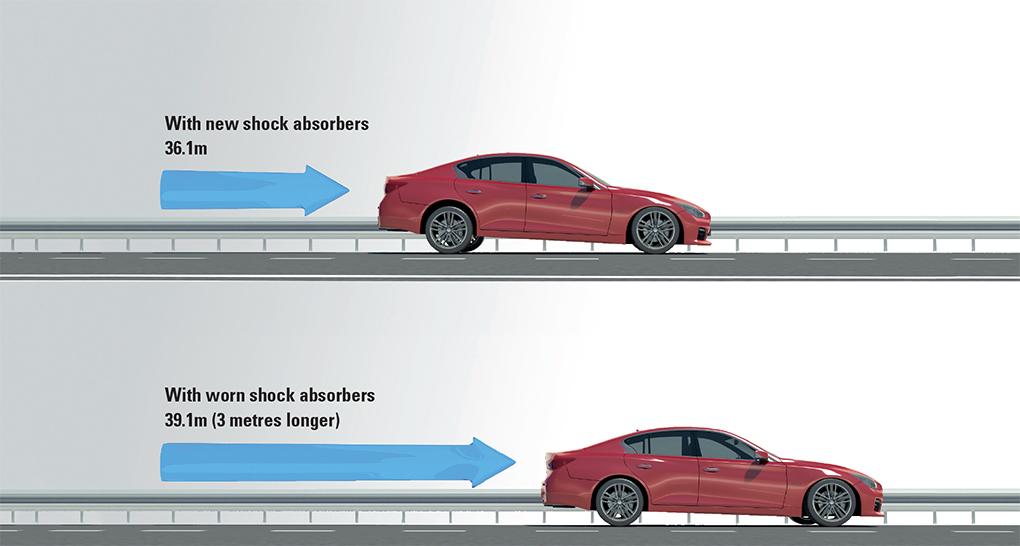
Body Roll
During cornering or swerving the vehicle body weight tries to lift & roll toward the outside of the turn. Controlling the weight shift via steering correction or slowing the vehicle speed are the only ways to reduce the effect, but will become difficult as conditions worsen.
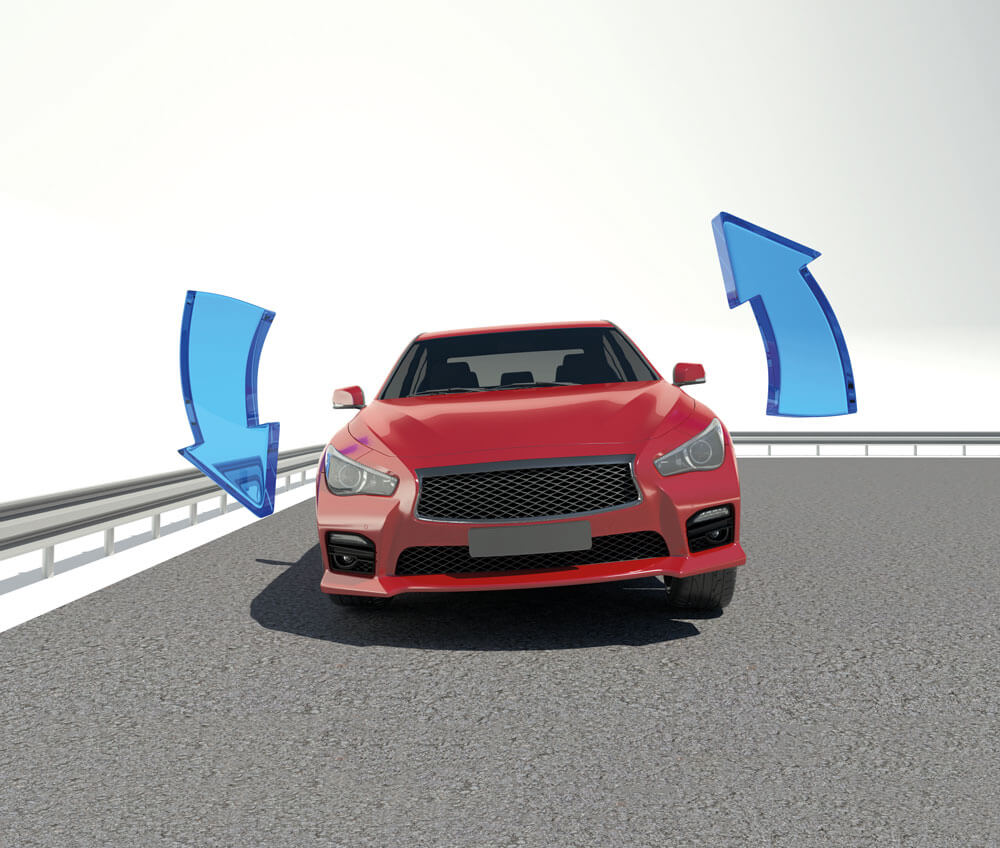
Traction Loss
When tyres can’t grip the road, for any reason at all, the result is loss of control. This can occur during braking, accelerating or cornering; when the tyres are bouncing or the vehicle body inertia is lifting or pushing the tyres; when the tyre tread is worn; when the tyres are improperly inflated; or when the shocks and struts aren’t controlling tyre and body movements.
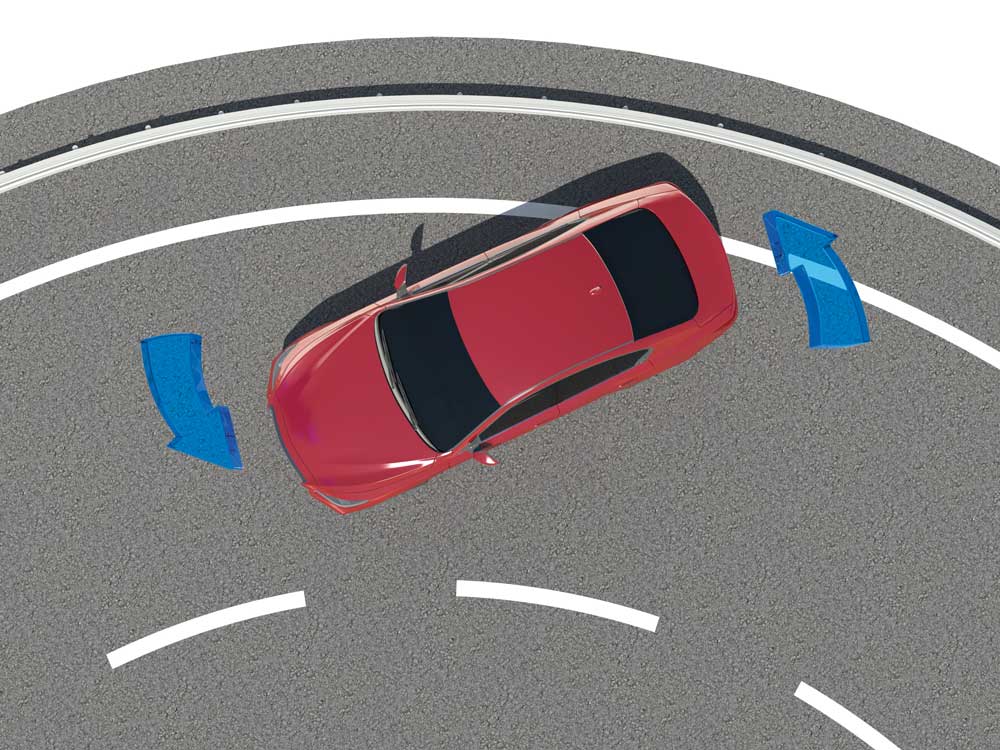
Acceleration Squat
During initial acceleration from idle position, the front end rises and the back end lowers. Front end rise is controlled by the rebound damping in the shock. On a front wheel drive vehicle this results in traction loss and reduces steering control.
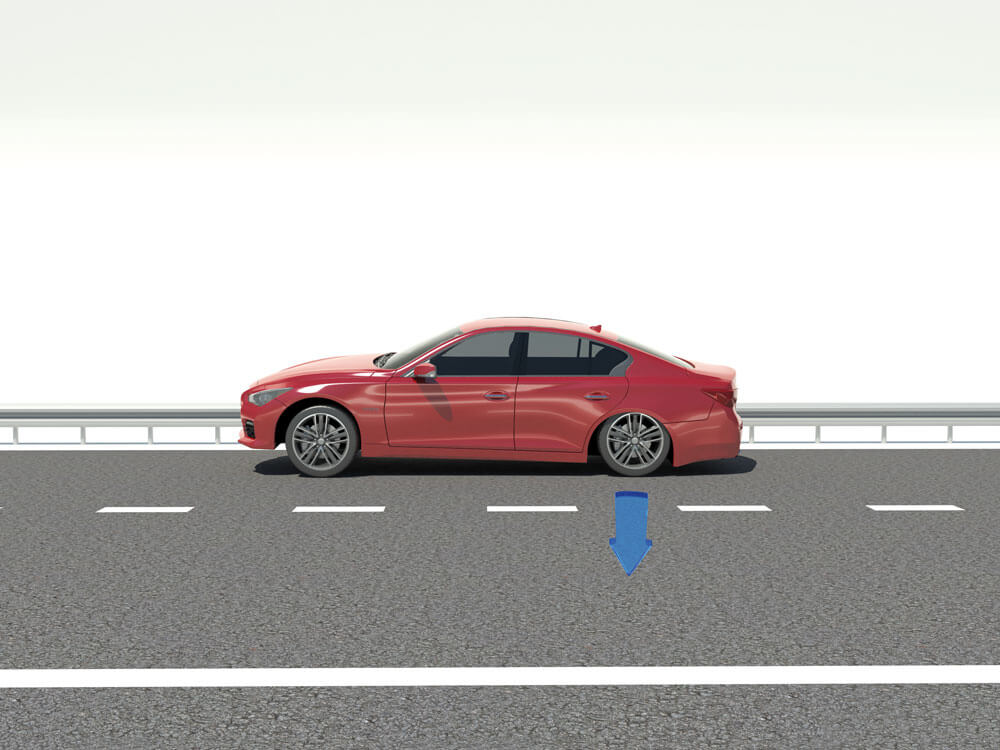
Ride Harshness
Small bumps and tyre movements are transmitted throughout the vehicle. The ride can feel rough, harsh and noisy. This abrupt action affects both driver comfort and tyre performance, resulting in traction loss and diminished ride satisfaction.
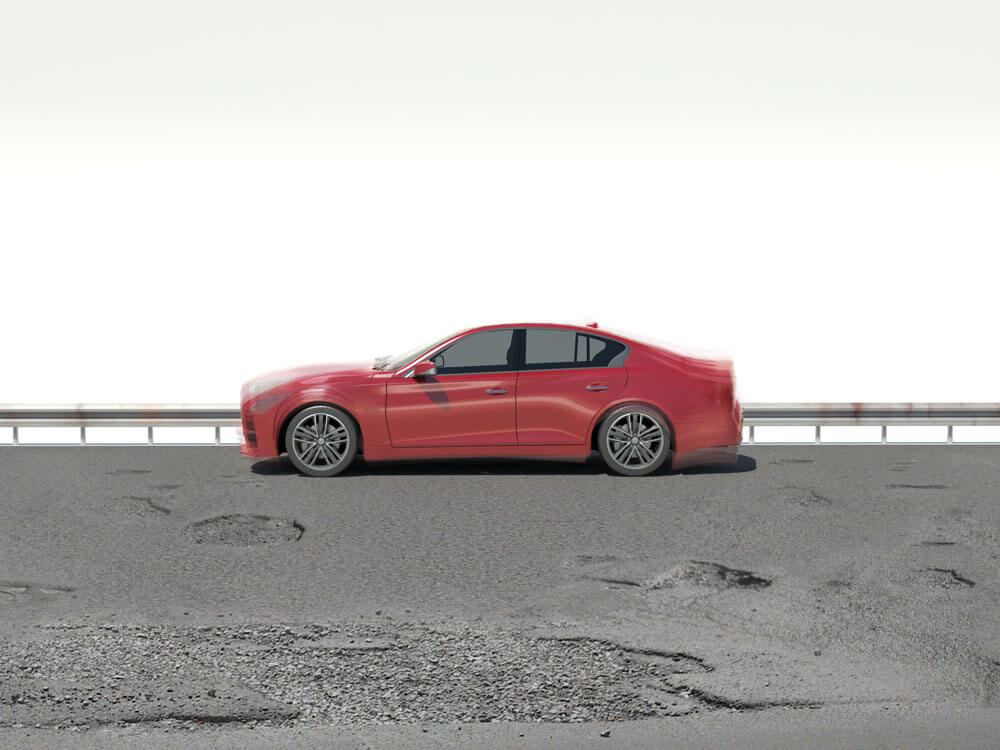
Uneven Tyre Wear
When the tyre is allowed to move up & down excessively, a rhythmic movement develops and an evenly-spaced tread wear pattern begins. Unlike tyre balance conditions, the wear pattern frequency is greater from shorter tyre movements that are not being dampened by worn shocks or struts. As the condition worsens, tyre noise occurs along with traction loss and tyre damage.
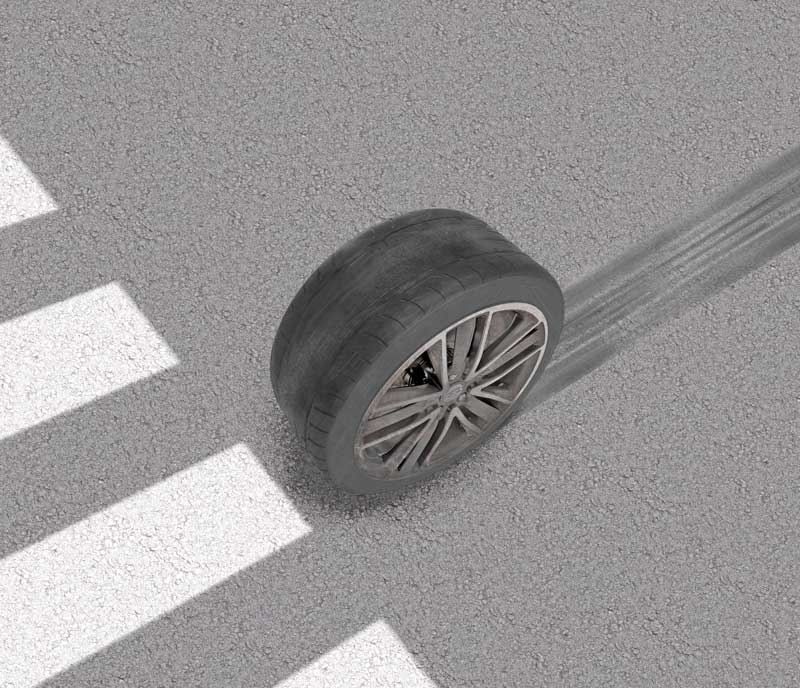
Bottom Out
Reacting to a bump is normal. But when the tyre is allowed to over-react and move upward too aggressively, the travel must be stopped by a bump stop. This is an indication that either the vehicle is being operated beyond its normal ability, such as being over-loaded or being driven too harshly. Or it could mean that the shock absorbers are worn and can no longer resist wheel movement adequately.
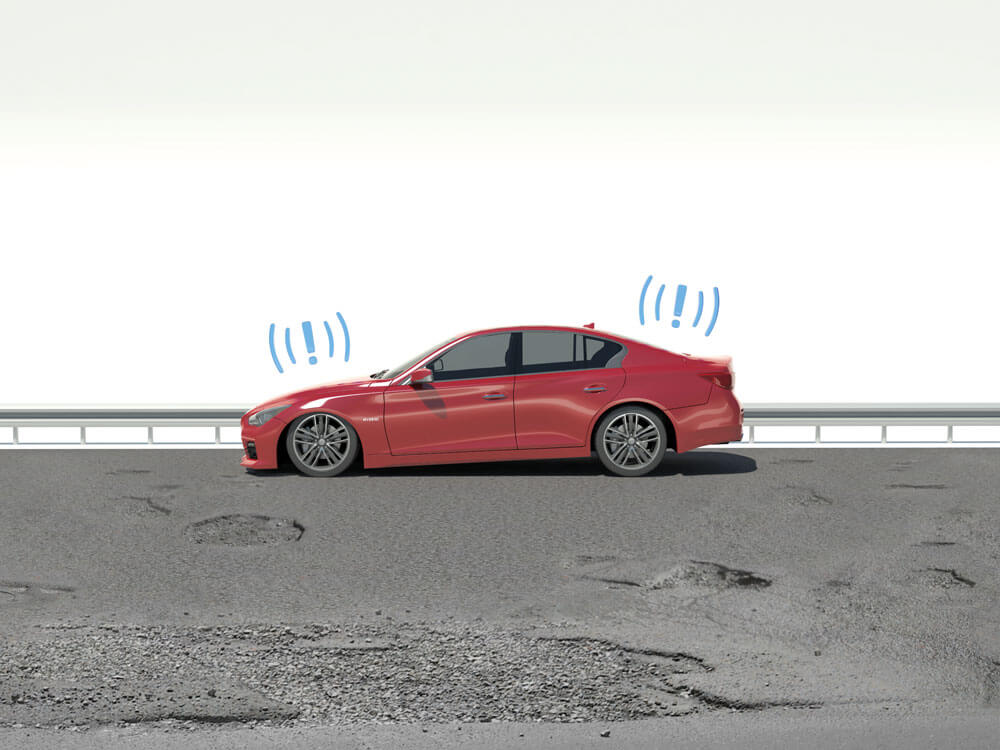


To ensure the vehicle performs safely and as designed, we recommend replacing struts and shock absorbers as parallel pairs (left & right).
When the damping rates are significantly different from side to side the vehicle body and wheel movement variations cancause handling abnormalities.
For this reason, replacing both left and right struts and shock absorbers for either the front or rear suspension position, will maintain optimal dampening control symmetry, resulting in an even and balanced drive.


The life of a vehicle’s suspension is affected by a number of variables:
- Various driving styles
- Different types of road surfaces
- Constantly loaded with heavy payloads
- Continuously towing trailers
- External environment (salty, wet or extremely dusty conditions)
KYB products however have been tried and tested and are designed to last beyond the warranty period of 6 Years/150,000km.


All KYB Shock Absorbers are valved slightly firmer than the original equipment equivalent, to offer greater control and help compensate for the loosening and softening of other suspension components over time. The result is an increased level of driving comfort and performance.
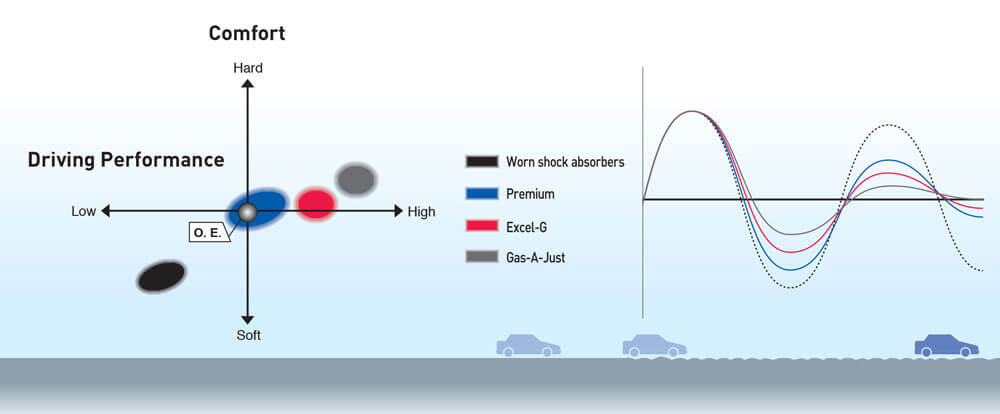


Standard replacement struts and shock absorbers are capable of handling the drop of a vehicle lowered 25-30mm.
Although the strut/shock absorber will be operating closer to its compressed length, it will still function normally.
A vehicle lowered more than 30mm on the other hand, requires specially designed struts and shock absorbers that are built to handle the drop, otherwise it may bottom out and cause internal damage.
Additionally, a standard length strut and shock absorber is generally unable to trap or hold a short coil spring captive.
As a result the coil spring may unseat itself or fall out. Keeping a coil spring trapped is a roadworthy requirement, so it’s critical that any modifications or suspension alterations are carried out by a suspension specialist.
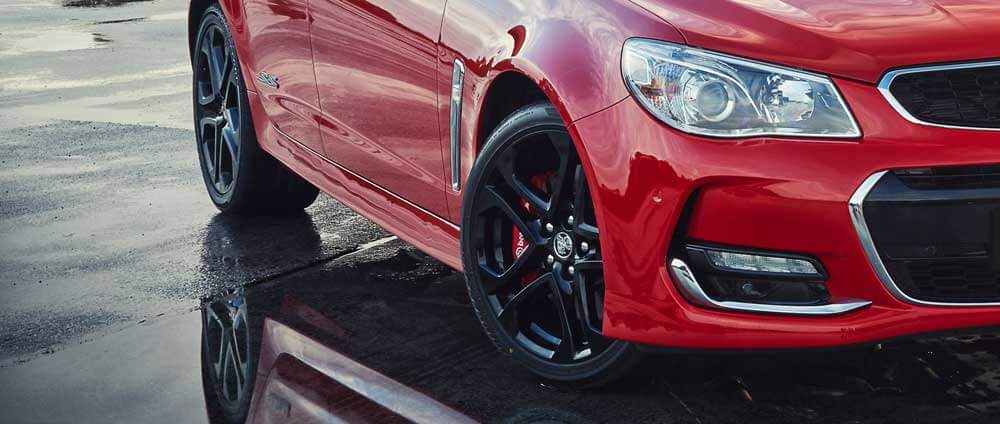


Yes, shock absorbers are valved differently for coil and leaf springs.
Leaf spring shock absorbers are typically valved softer than those for coil springs. This is due to the self-damping characteristics of a leaf spring. As a leaf spring pack compresses and extends, the individual leafs move against each other to create friction and slow down the vehicle movement. As a result, the compression and rebound valving in the shock absorber can be valved softer due to this natural self-damping.
A coil spring is somewhat different, as it has no inbuilt dampening control and requires the compression and rebound of the shock absorber to be firmer.


No, the closure of the Holden, Ford and Toyota manufacturing sites has no impact on KYB as we do not supply O.E. products for locally produced vehicles.
On a global scale, KYB is one of the world’s largest O.E. suppliers of struts and shock absorbers, having developed and supplied products to an array of vehicle manufacturers for decades, with the ability to develop new exciting products for vehicles in the future.
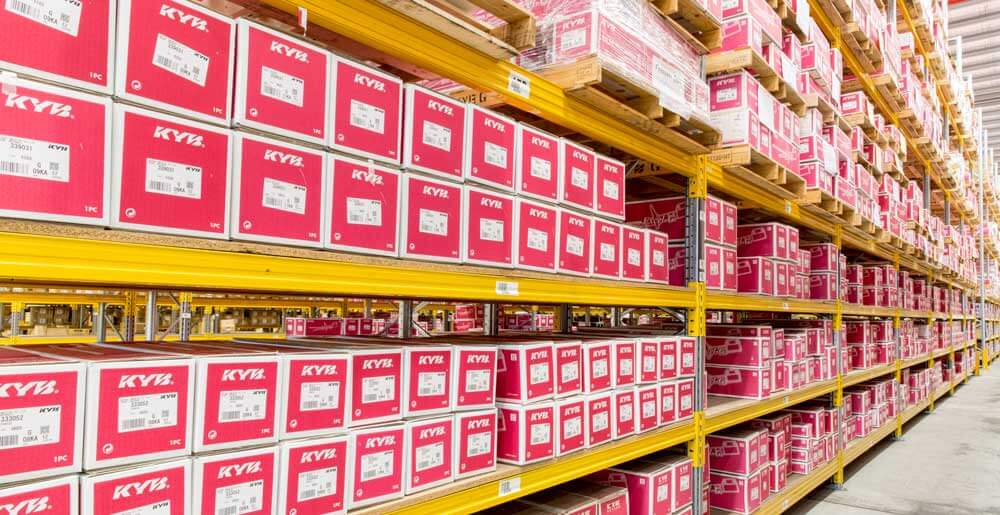


Established from 80 years of Original Equipment experience and expertise, KYB can design and manufacture products that deliver the best handling and ride quality for every vehicle.
KYB suspension products are vehicle specific, making each part ideal for its corresponding make and model. In addition, KYB considers the specific factors that each unique vehicle demands, for example: vehicle type, intended use, level of comfort and performance.
All KYB products comply with the global ISO standards of manufacturing, adhering to stringent procedures and processes with high levels of repeatability and quality control.


A visual inspection can often provide the initial clues for diagnosing diminished shock absorber performance.
Here are some visual signs to assist in identifying a worn shock absorber or strut:
- Oil leakage
- Damaged piston rod
- Rusted or damaged body
- Worn and perished bushes
- Pitted or damaged dust boot
- Loose or broken bump stop


As the name suggests, a steering damper acts to dampen and control a vehicle when the tyre makes contact with a hole or rut on the road.
It also helps the vehicle to drive and steer in a straight line, preventing it from following channels and curves in the road surface. While a new steering damper reduces driver fatigue and makes driving safer, a faulty one can force the steering wheel from the driver’s hands when contact is made with a bump in the road. While these are not required in modern 4wd vehicles fitted with steering racks, 4wd’s with steering boxes do require a steering damper.
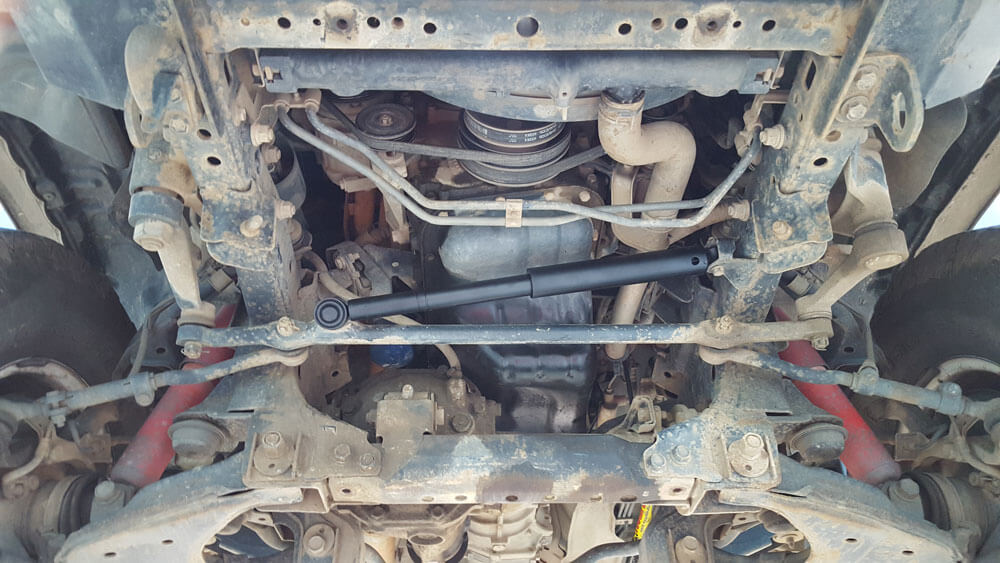


Oversteer occurs when a vehicle turns (steers) more than the amount required by the driver. This often occurs when more acceleration than necessary is applied with front wheels turned.
Understeer occurs when a vehicle turns (steers) less than the amount required by the driver. This often occurs when travelling too quickly around a corner or by applying too much power when exiting a corner.
As a worn shock absorber’s capacity to control wheel and body movement reduces, the occurrence of vehicle oversteer or understeer is greatly increased.
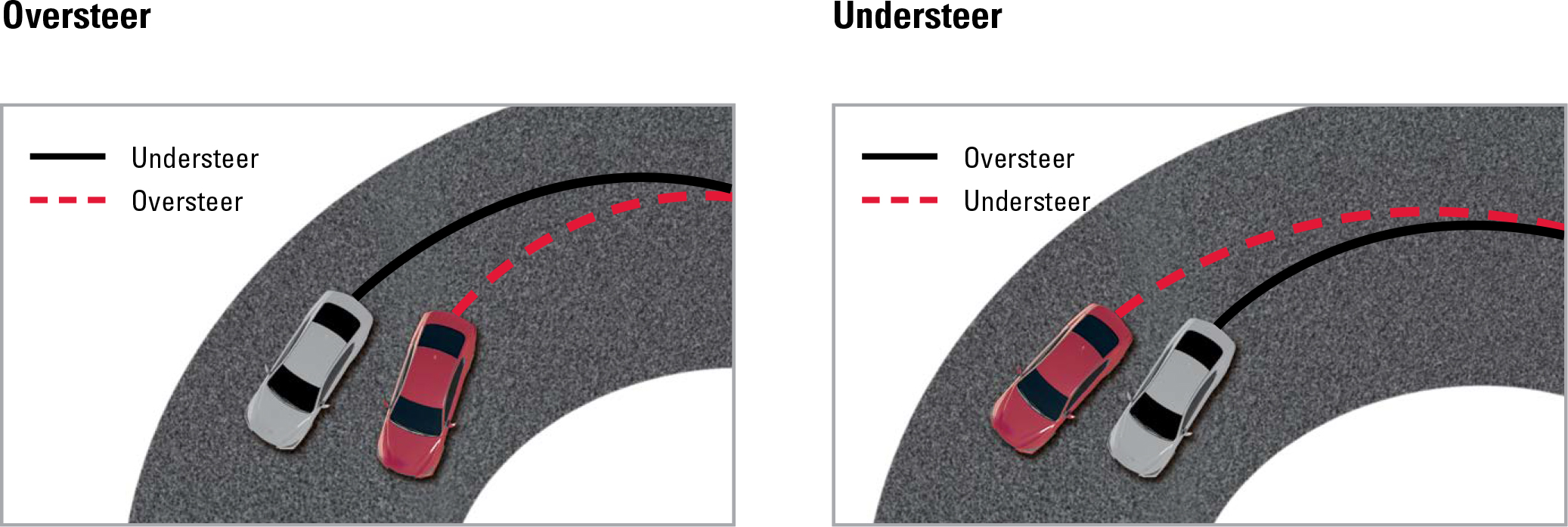


Yes, it is a good idea to inspect and replace worn strut mounts, bump stops and protection boots when replacing struts.
Replacing struts in a vehicle can be very time intensive as it requires the entire strut to be removed and disassembled. The strut mount optimises suspension performance by providing a smooth steering response and reducing vibration. Bump stops safeguard the strut from bottom-out damage, and protection boots provide protection to the struts piston rod from road debris (e.g. dirt, dust, salt and stones).
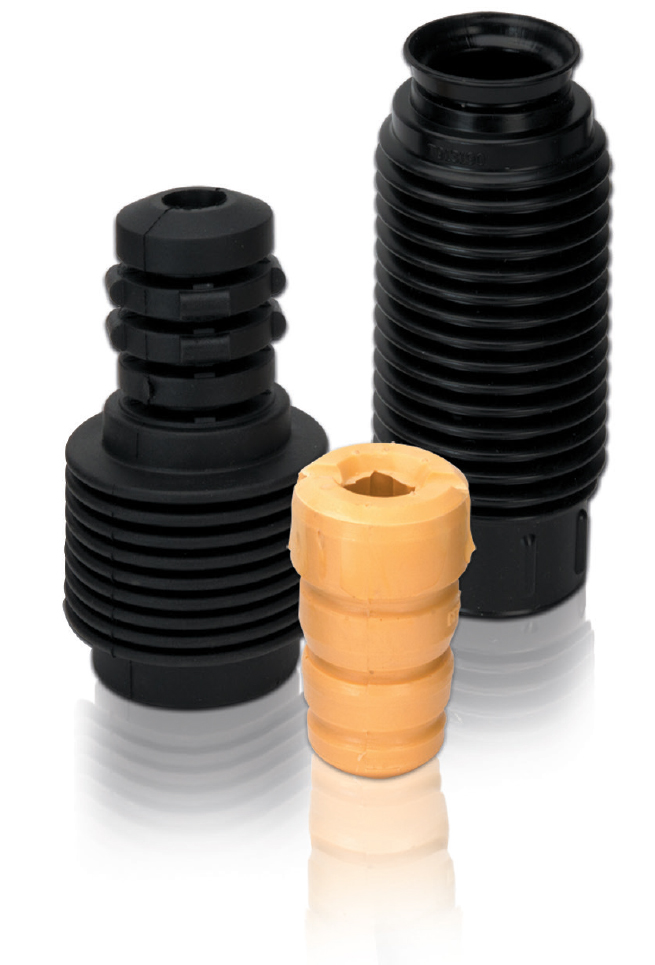
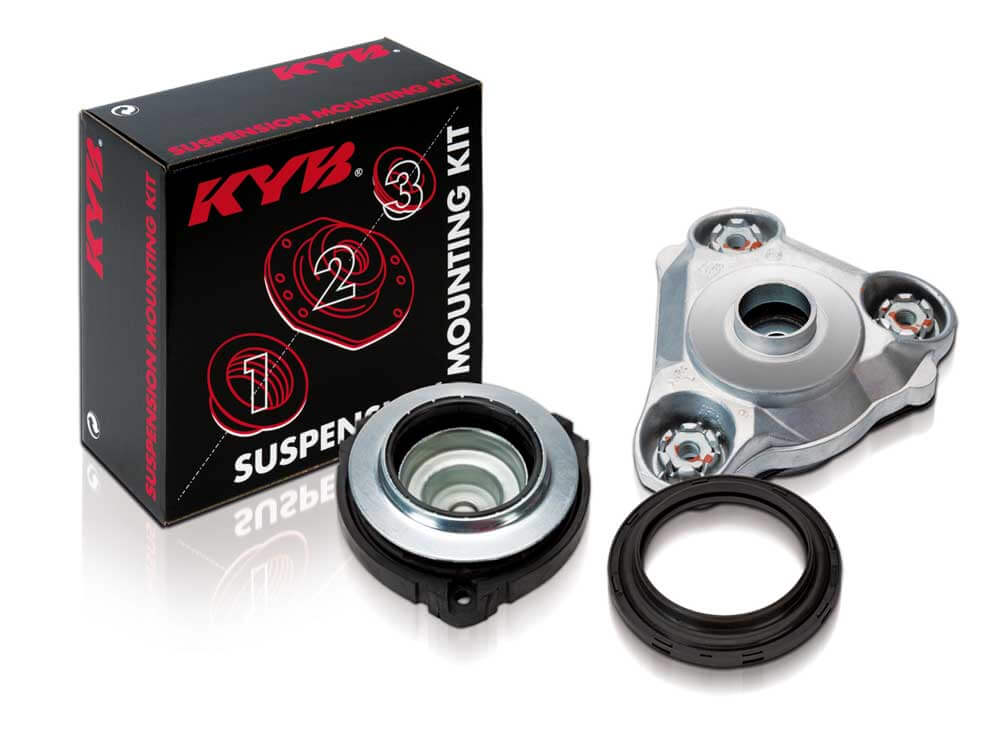


Standard replacement struts and shock absorbers are capable of handling the drop of a vehicle lowered 25-30mm.
Although the strut/shock absorber will be operating closer to its compressed length, it will still function normally.
A vehicle lowered more than 30mm on the other hand, requires specially designed struts and shock absorbers that are built to handle the drop, otherwise it may bottom out and cause internal damage.
Additionally, a standard length strut and shock absorber is generally unable to trap or hold a short coil spring captive.
As a result the coil spring may unseat itself or fall out. Keeping a coil spring trapped is a roadworthy requirement, so it’s critical that any modifications or suspension alterations are carried out by a suspension specialist.


Established from 90 years of Original Equipment experience and expertise, KYB can design and manufacture products that deliver the best handling and ride quality for every vehicle.
KYB suspension products are vehicle specific, making each part ideal for its corresponding make and model. In addition, KYB considers the specific factors that each unique vehicle demands, for example: vehicle type, intended use, level of comfort and performance.
All KYB products comply with the global ISO standards of manufacturing, adhering to stringent procedures and processes with high levels of repeatability and quality control.


A visual inspection can often provide the initial clues for diagnosing diminished shock absorber performance.
Here are some visual signs to assist in identifying a worn shock absorber or strut:
- Oil leakage
- Damaged piston rod
- Rusted or damaged body
- Worn and perished bushes
- Pitted or damaged dust boot
- Loose or broken bump stop
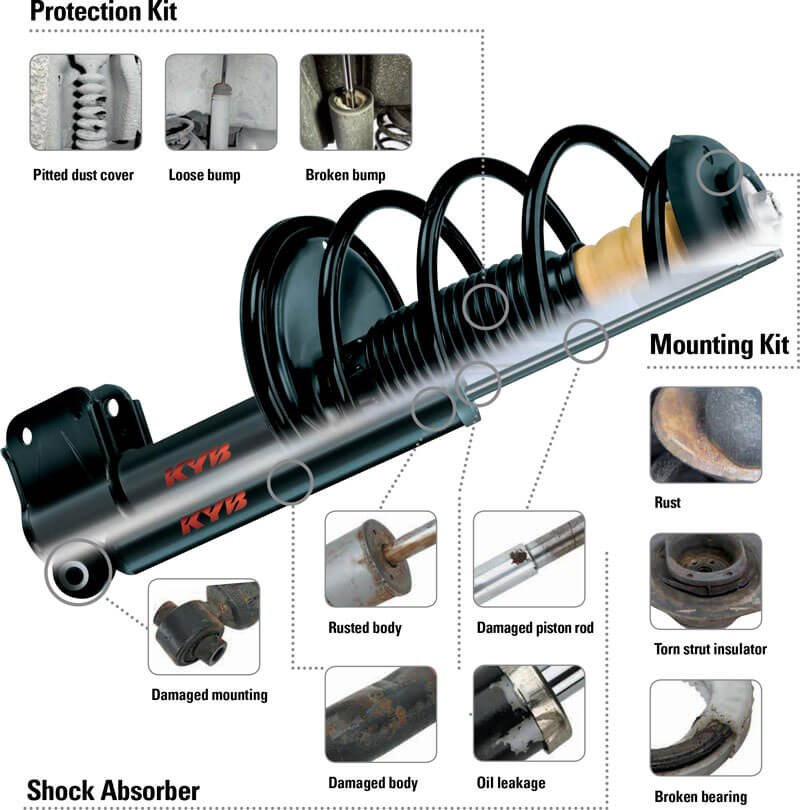


The intended purpose of a sports car and a family sedan are very different and as such so is each vehicle’s suspension.
The average family car typically offers a smooth and controlled drive, with little road surface feedback or noise transmitted into the cabin. It also generally has little body roll, with a high level of comfort.
A sports car on the other hand, demands sharp and responsive handling and delivers a ride quality that can be firm and at times harsh. With a low centre of gravity and virtually no body roll, there is substantial road surface feedback and noise transmitted into the cabin.
The differences between the suspension in both vehicles is a result of the strut and shock absorber specific valve coding, matched to specific coil spring rates. Each combination works in unison to deliver the unique ride quality and demanded performance for every vehicle on the road.
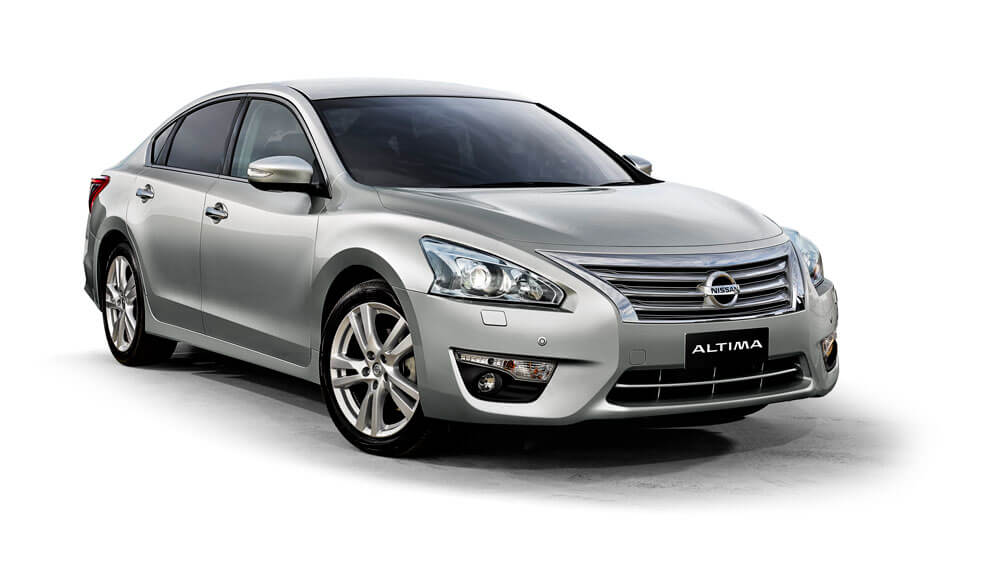


The purpose of an Internal Top-Out Bump Stop is to prevent full extension of the piston rod while driving.
Limiting the travel prevents metal-to-metal contact. More importantly it helps to control the vehicle by reducing body roll and keeping the vehicle flatter during cornering. It also reduces vehicle traction loss under hard acceleration and braking.


KYB manufactures many other global products within the hydraulics industry, including but not limited to:
Vibration-Control Technologies:
- Earthquake damper
- Motorcycle front forks and rear damper
Power-Control Technologies:
- Aircraft actuators
- Building and stage equipment
- Marine Cranes
System Technologies with Advanced Functions:
- Semi-active suspension systems for bullet trains
- Concrete mixers
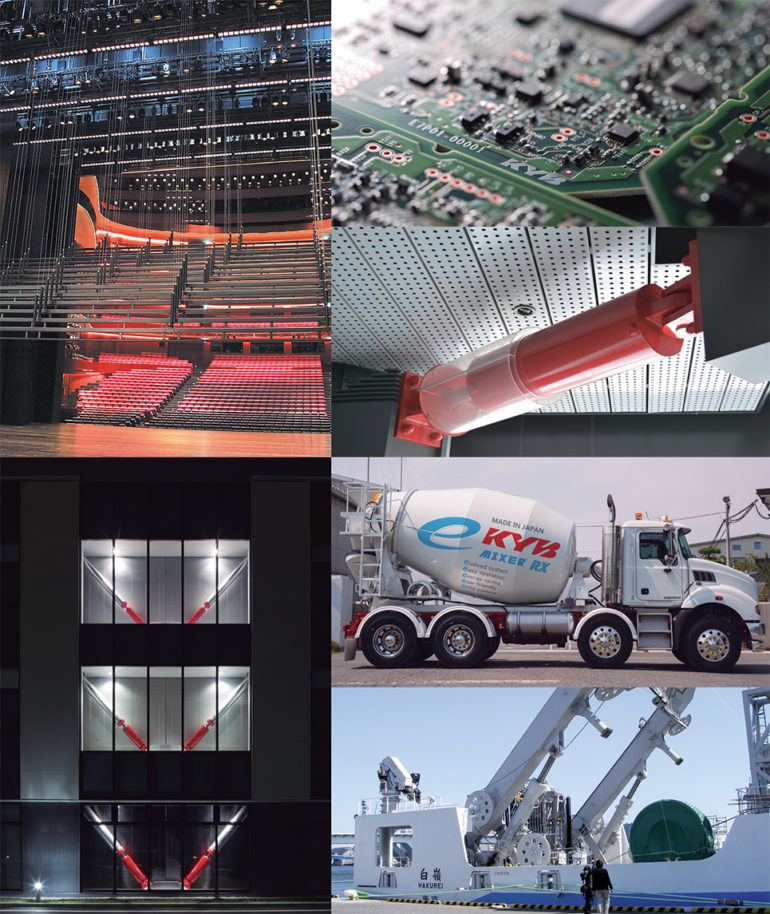


The future for KYB is bright, with many opportunities.
As one of the world’s largest OE suppliers we aim to continue growing the OE component of our business. KYB’s manufacturing, which had its roots in hydraulic technologies, combines hydraulics with electronics technologies to yield great new products.
Our mission and our ongoing challenge as a company is to develop and apply new technologies to make life safe and comfortable.
At KYB, we’re looking to the future – and to the next era of innovation.
Our Precision, Your Advantage
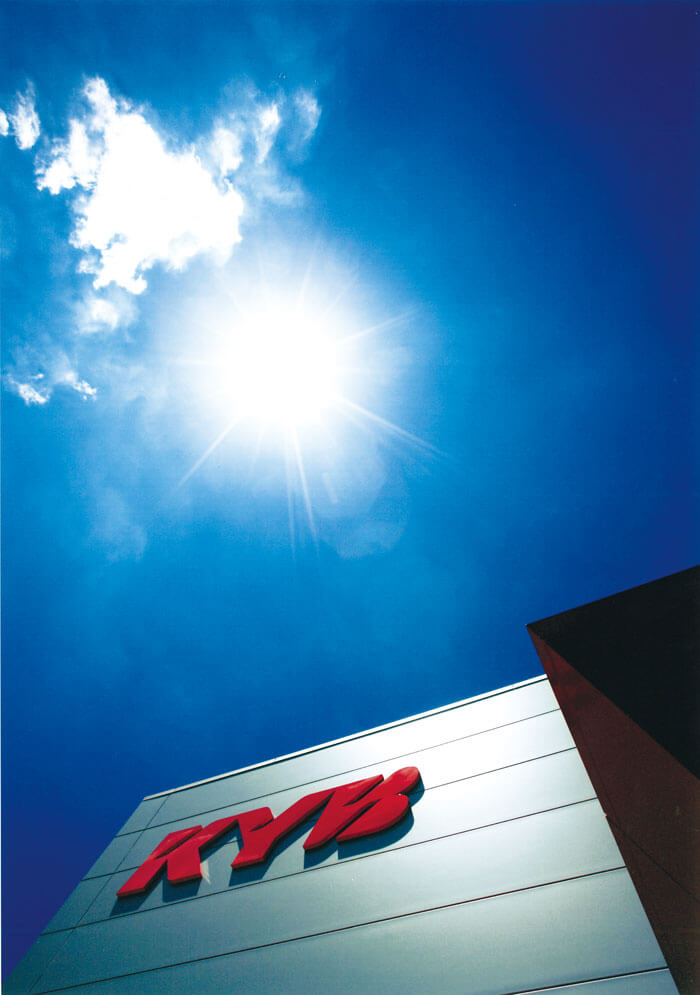


The function of a shock absorber is to control a vehicle’s movement when the tyres come into contact with a bump in the road.
The shock absorber offers resistance to the suspension system to slow vehicle movement to a controllable state. Without the dampening effects of a shock absorber, the vehicle would not react by reducing speed and may as a result bounce or roll off the road. Listed below are five key functions of a shock absorber:
- Control the movement of the vehicle
- Provide a smooth and comfortable ride
- Optimise braking performance
- Enhance steering responsiveness
- Ensure optimum contact between tyres and the road



When driving, road surface irregularities cause shocks absorbers and struts to compress and extend, forcing fluid through a series of speed sensitive valves, (the piston rod speed determines the appropriate valve) to restrict oil flow and control vehicular movement.
This friction causes heat to be generated in the oil as it passes through the valves. This heat is then dissipated through the outer body of the shock absorber and cooled by air passing over it. Meanwhile, nitrogen gas adds pressure to the hydraulic oil to make the shock absorber more reactive to movement, to delay the onset of fading and foaming and to make it a high performing product.



KYB manufactures both Twin-Tube and Mono-Tube shock absorbers for the Australian market.
The Twin-Tube construction design is the most common and popular shock absorber for aftermarket vehicles, due to the exceptional performance and affordable price for the average vehicle.
Twin-Tube Shock Absorbers contain two cylinders. The inner cylinder is where the piston rod and valve body move up and down. The outer cylinder serves as a reservoir for the hydraulic fluid. There are fluid ports in the piston and in the stationary base valve. The moving piston controls most of the damping force, while the base valve regulates fluid flow between both cylinders and provides additional damping control.
Mono-Tube Shock Absorbers have a single cylinder that has a single piston valve body, and has two distinct chambers. The high pressure gas chamber is separated from the fluid chamber by a floating piston and seal, which provides an expansion area for the excess fluid movement during the compression stroke. On more aggressive movement the floating piston is pushed further into the gas chamber which increases gas pressure and provides additional damping force. Due to its higher performance capabilities, the mono-tube design is used as original equipment on some vehicles and offered as an upgrade on vehicles that came equipped with the twin-tube design.



While both types of shock absorbers control vehicle movement, the self-levelling shock absorber is designed to perform an additional function.
Self-levelling suspension, which is commonly found in SUV models, enables the rear of a car to sag when weight is applied as a result of softer coil springs. When driving, the movement of the vehicle causes small compressions within the shock absorbers to raise the vehicle back to its factory pre-determined ride height. Self-levelling shock absorbers are suited to vehicles that carry heavy loads or are required for towing.



SIMPLY PUT: MORE WEAR = LESS VEHICLE CONTROL
There are two detrimental influences that begin to affect vehicle driveability as shock absorbers come to the end of their lifecycle:
- As a shock absorber’s ability to dampen wheel and body movement diminishes, vehicle control becomes increasingly difficult. This becomes evident as quick-stopping distances lengthen and the driver is forced to compensate for conditions like body roll and nose-diving.
- Since more suspension movement develops as shock absorbers deteriorate, all associated steering and suspension components are subjected to additional impacts and wear. A vehicle’s suspension springs, support arms, bushings, joints and wheel alignment will all suffer.
See below for examples of effects of worn shock absorbers.
Braking Distance
When you apply the brakes, the tyres begin stopping but the vehicle body inertia tries to keep going forward. The result thrusts the front end downward and the back end upward. This imbalance puts stress on the front brakes and reduces the rear brake’s efficiency. The effect then makes controlling and steering the vehicle more difficult.
As shock absorbers and struts wear and the tyre to road contact becomes less effective, there is a dramatic increase in vehicle braking distance.

Body Roll
During cornering or swerving the vehicle body weight tries to lift & roll toward the outside of the turn. Controlling the weight shift via steering correction or slowing the vehicle speed are the only ways to reduce the effect, but will become difficult as conditions worsen.

Traction Loss
When tyres can’t grip the road, for any reason at all, the result is loss of control. This can occur during braking, accelerating or cornering; when the tyres are bouncing or the vehicle body inertia is lifting or pushing the tyres; when the tyre tread is worn; when the tyres are improperly inflated; or when the shocks and struts aren’t controlling tyre and body movements.

Acceleration Squat
During initial acceleration from idle position, the front end rises and the back end lowers. Front end rise is controlled by the rebound damping in the shock. On a front wheel drive vehicle this results in traction loss and reduces steering control.

Ride Harshness
Small bumps and tyre movements are transmitted throughout the vehicle. The ride can feel rough, harsh and noisy. This abrupt action affects both driver comfort and tyre performance, resulting in traction loss and diminished ride satisfaction.

Uneven Tyre Wear
When the tyre is allowed to move up & down excessively, a rhythmic movement develops and an evenly-spaced tread wear pattern begins. Unlike tyre balance conditions, the wear pattern frequency is greater from shorter tyre movements that are not being dampened by worn shocks or struts. As the condition worsens, tyre noise occurs along with traction loss and tyre damage.

Bottom Out
Reacting to a bump is normal. But when the tyre is allowed to over-react and move upward too aggressively, the travel must be stopped by a bump stop. This is an indication that either the vehicle is being operated beyond its normal ability, such as being over-loaded or being driven too harshly. Or it could mean that the shock absorbers are worn and can no longer resist wheel movement adequately.



To ensure the vehicle performs safely and as designed, we recommend replacing struts and shock absorbers as parallel pairs (left & right).
When the damping rates are significantly different from side to side the vehicle body and wheel movement variations cancause handling abnormalities.
For this reason, replacing both left and right struts and shock absorbers for either the front or rear suspension position, will maintain optimal dampening control symmetry, resulting in an even and balanced drive.


The life of a vehicle’s suspension is affected by a number of variables:
- Various driving styles
- Different types of road surfaces
- Constantly loaded with heavy payloads
- Continuously towing trailers
- External environment (salty, wet or extremely dusty conditions)
KYB products however have been tried and tested and are designed to last beyond the warranty period of 6 Years/150,000km.


All KYB Shock Absorbers are valved slightly firmer than the original equipment equivalent, to offer greater control and help compensate for the loosening and softening of other suspension components over time. The result is an increased level of driving comfort and performance.



Standard replacement struts and shock absorbers are capable of handling the drop of a vehicle lowered 25-30mm.
Although the strut/shock absorber will be operating closer to its compressed length, it will still function normally.
A vehicle lowered more than 30mm on the other hand, requires specially designed struts and shock absorbers that are built to handle the drop, otherwise it may bottom out and cause internal damage.
Additionally, a standard length strut and shock absorber is generally unable to trap or hold a short coil spring captive.
As a result the coil spring may unseat itself or fall out. Keeping a coil spring trapped is a roadworthy requirement, so it’s critical that any modifications or suspension alterations are carried out by a suspension specialist.



Yes, shock absorbers are valved differently for coil and leaf springs.
Leaf spring shock absorbers are typically valved softer than those for coil springs. This is due to the self-damping characteristics of a leaf spring. As a leaf spring pack compresses and extends, the individual leafs move against each other to create friction and slow down the vehicle movement. As a result, the compression and rebound valving in the shock absorber can be valved softer due to this natural self-damping.
A coil spring is somewhat different, as it has no inbuilt dampening control and requires the compression and rebound of the shock absorber to be firmer.


No, the closure of the Holden, Ford and Toyota manufacturing sites has no impact on KYB as we do not supply O.E. products for locally produced vehicles.
On a global scale, KYB is one of the world’s largest O.E. suppliers of struts and shock absorbers, having developed and supplied products to an array of vehicle manufacturers for decades, with the ability to develop new exciting products for vehicles in the future.



Established from 80 years of Original Equipment experience and expertise, KYB can design and manufacture products that deliver the best handling and ride quality for every vehicle.
KYB suspension products are vehicle specific, making each part ideal for its corresponding make and model. In addition, KYB considers the specific factors that each unique vehicle demands, for example: vehicle type, intended use, level of comfort and performance.
All KYB products comply with the global ISO standards of manufacturing, adhering to stringent procedures and processes with high levels of repeatability and quality control.


A visual inspection can often provide the initial clues for diagnosing diminished shock absorber performance.
Here are some visual signs to assist in identifying a worn shock absorber or strut:
- Oil leakage
- Damaged piston rod
- Rusted or damaged body
- Worn and perished bushes
- Pitted or damaged dust boot
- Loose or broken bump stop


As the name suggests, a steering damper acts to dampen and control a vehicle when the tyre makes contact with a hole or rut on the road.
It also helps the vehicle to drive and steer in a straight line, preventing it from following channels and curves in the road surface. While a new steering damper reduces driver fatigue and makes driving safer, a faulty one can force the steering wheel from the driver’s hands when contact is made with a bump in the road. While these are not required in modern 4wd vehicles fitted with steering racks, 4wd’s with steering boxes do require a steering damper.



Oversteer occurs when a vehicle turns (steers) more than the amount required by the driver. This often occurs when more acceleration than necessary is applied with front wheels turned.
Understeer occurs when a vehicle turns (steers) less than the amount required by the driver. This often occurs when travelling too quickly around a corner or by applying too much power when exiting a corner.
As a worn shock absorber’s capacity to control wheel and body movement reduces, the occurrence of vehicle oversteer or understeer is greatly increased.



Yes, it is a good idea to inspect and replace worn strut mounts, bump stops and protection boots when replacing struts.
Replacing struts in a vehicle can be very time intensive as it requires the entire strut to be removed and disassembled. The strut mount optimises suspension performance by providing a smooth steering response and reducing vibration. Bump stops safeguard the strut from bottom-out damage, and protection boots provide protection to the struts piston rod from road debris (e.g. dirt, dust, salt and stones).




Standard replacement struts and shock absorbers are capable of handling the drop of a vehicle lowered 25-30mm.
Although the strut/shock absorber will be operating closer to its compressed length, it will still function normally.
A vehicle lowered more than 30mm on the other hand, requires specially designed struts and shock absorbers that are built to handle the drop, otherwise it may bottom out and cause internal damage.
Additionally, a standard length strut and shock absorber is generally unable to trap or hold a short coil spring captive.
As a result the coil spring may unseat itself or fall out. Keeping a coil spring trapped is a roadworthy requirement, so it’s critical that any modifications or suspension alterations are carried out by a suspension specialist.


Established from 90 years of Original Equipment experience and expertise, KYB can design and manufacture products that deliver the best handling and ride quality for every vehicle.
KYB suspension products are vehicle specific, making each part ideal for its corresponding make and model. In addition, KYB considers the specific factors that each unique vehicle demands, for example: vehicle type, intended use, level of comfort and performance.
All KYB products comply with the global ISO standards of manufacturing, adhering to stringent procedures and processes with high levels of repeatability and quality control.


A visual inspection can often provide the initial clues for diagnosing diminished shock absorber performance.
Here are some visual signs to assist in identifying a worn shock absorber or strut:
- Oil leakage
- Damaged piston rod
- Rusted or damaged body
- Worn and perished bushes
- Pitted or damaged dust boot
- Loose or broken bump stop



The intended purpose of a sports car and a family sedan are very different and as such so is each vehicle’s suspension.
The average family car typically offers a smooth and controlled drive, with little road surface feedback or noise transmitted into the cabin. It also generally has little body roll, with a high level of comfort.
A sports car on the other hand, demands sharp and responsive handling and delivers a ride quality that can be firm and at times harsh. With a low centre of gravity and virtually no body roll, there is substantial road surface feedback and noise transmitted into the cabin.
The differences between the suspension in both vehicles is a result of the strut and shock absorber specific valve coding, matched to specific coil spring rates. Each combination works in unison to deliver the unique ride quality and demanded performance for every vehicle on the road.



The purpose of an Internal Top-Out Bump Stop is to prevent full extension of the piston rod while driving.
Limiting the travel prevents metal-to-metal contact. More importantly it helps to control the vehicle by reducing body roll and keeping the vehicle flatter during cornering. It also reduces vehicle traction loss under hard acceleration and braking.


KYB manufactures many other global products within the hydraulics industry, including but not limited to:
Vibration-Control Technologies:
- Earthquake damper
- Motorcycle front forks and rear damper
Power-Control Technologies:
- Aircraft actuators
- Building and stage equipment
- Marine Cranes
System Technologies with Advanced Functions:
- Semi-active suspension systems for bullet trains
- Concrete mixers



The future for KYB is bright, with many opportunities.
As one of the world’s largest OE suppliers we aim to continue growing the OE component of our business. KYB’s manufacturing, which had its roots in hydraulic technologies, combines hydraulics with electronics technologies to yield great new products.
Our mission and our ongoing challenge as a company is to develop and apply new technologies to make life safe and comfortable.
At KYB, we’re looking to the future – and to the next era of innovation.
Our Precision, Your Advantage



